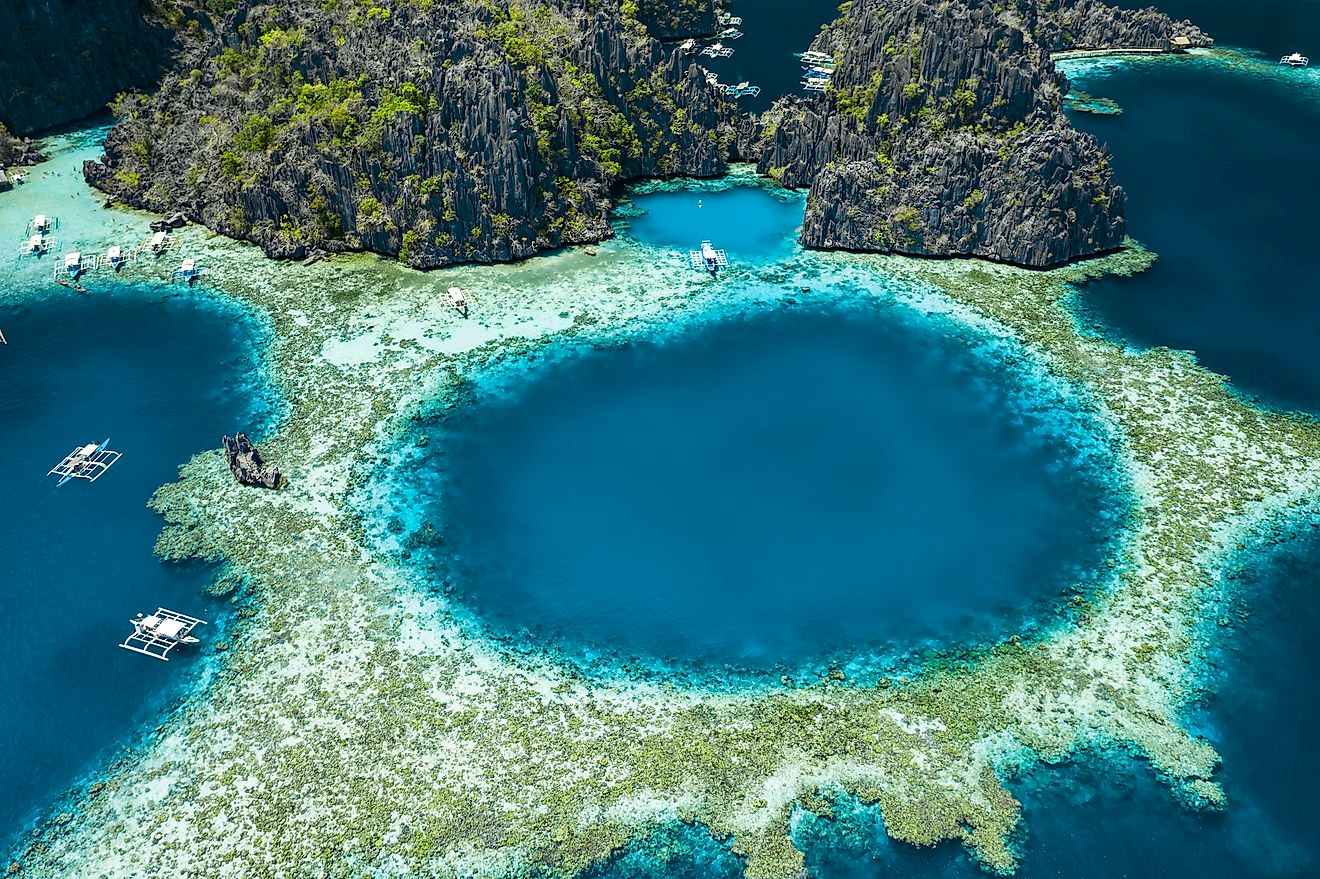Water bodies come in many forms, but lakes and lagoons are two of the most fascinating and widely recognised types. While both contain water, they differ fundamentally in their formation, location, depth, and interaction with surrounding ecosystems. Lakes are typically inland, often formed by geological processes, and can vary from small ponds to massive freshwater reservoirs. Lagoons, in contrast, are shallow water bodies usually located along coastlines or within atolls, separated from the ocean by natural barriers. Understanding these differences is crucial not only for geography enthusiasts but also for environmental management, biodiversity conservation, and human utilisation of water resources.
Also Read: List of Top 10 Alkaline Lakes in the World
About Lakes

Source: iStock
A lake is a large inland water body surrounded by land. Generally, Lakes receive water from rivers, streams, or underground aquifers. It also has an outlet river for drainage.
Types of Lakes:
-
Natural Lakes: These types of lakes are formed in mountain valleys, rift zones, glacial areas, or along mature rivers.
-
Artificial Lakes: These types of lakes are created for irrigation purposes, hydroelectric power, water supply, or recreation.

Geological Nature:
-
Lakes are temporary over geological time, and they can be dried due to irregularities in the climate.
-
These lakes are gradually filled with sediment, small pebbles or stone or overflow.
-
Example: Lake Baikal in Russia, depth 5,387 feet, is the world’s deepest lake.
Water Layers & Mixing:
-
Lakes develop thermoclines due to water density and temperature differences.
-
Temperate regions: Seasonal mixing brings oxygen to deeper layers.
-
Tropical deep lakes: Limited mixing can create oxygen-deprived bottom layers rich in gases.
Also Read: Difference between Bay and Ocean?
Hazards:
-
Many rare events are seen generally in lakes which is located near the mountain ranges, like landslides or earthquakes, and due to landslides, they can suddenly release gases.
-
Example: Lake Nyos, Cameroon, a catastrophic gas release incident.
About Lagoons

Source: worldatlas
A lagoon is a shallow water body separated from a larger water body by natural barriers such as sandbars, coral reefs, or islands. Commonly found along coastlines or as part of oceanic atolls. The name of Lagoons derives from the Italian word laguna, meaning a shallow body of water.
Depth & Size:
-
Generally shallower than lakes.
-
Coastal lagoons: These types of lagoons are typically less than 65 feet deep.
-
Oceanic lagoons: They can reach up to 200 feet deep.
-
Deepest lagoon: Mayotte Island, Comoro archipelago, ~300 feet deep.
Water Source:
-
Lagoons are mostly fed by seawater.
-
Some lagoons, like the Curonian Lagoon in Russia, are fed by rivers, creating estuarine lagoons with distinct ecological features.

Source: Viator
Generally, the water circulation in lagoons is influenced by their depth, shape, and these Lagoons are connected to the sea. Lagoons are classified into three types based on water exchange:
-
Choked lagoons: These Lagoons are narrow openings that restrict water flow, reducing mixing (e.g., Lagoa dos Patos in Brazil).
-
Restricted lagoons: Multiple outlets allow partial water exchange with the sea, often influenced by winds (e.g., Laguna de Terminos in Mexico).
-
Leaky lagoons: These types of Lagoons are in wide channels enabling free water flow and rapid mixing (e.g., the Mississippi Sound in the U.S.).
Difference between Lakes & Lagoons
| Feature | Lake | Lagoon |
| Location | Lakes are generally inland, surrounded by land | Lagoons are found near coastal or within oceanic atolls |
| Depth | Lakes are generally deeper, e.g., Lake Baikal | Lagoons are usually shallow, less than 200 feet deep |
| Water Source | Its water sources come from the rivers, streams, groundwater, and rainfall | Its water sources come from the ocean, primarily, and sometimes rivers in estuarine lagoons |
| Water Circulation | It is layered with thermoclines, and its mixing depends on season and depth | Lagoons are generally shallow, and their circulation depends on connection to the sea and barrier type |
| Types | Lakes are generally found both naturally and artificially. | Coastal lagoons and atoll/oceanic lagoons; coastal lagoons are further divided into choked, restricted, and leaky |
Conclusion
Lakes and lagoons, though both home to life and water’s beauty, tell different stories of our planet. Lakes, deep and inland, cradle freshwater ecosystems, while lagoons, shallow and coastal, bridge land and sea. Recognising their differences helps us protect biodiversity, manage water wisely, and cherish the delicate balance of nature around us.
Comments
All Comments (0)
Join the conversation